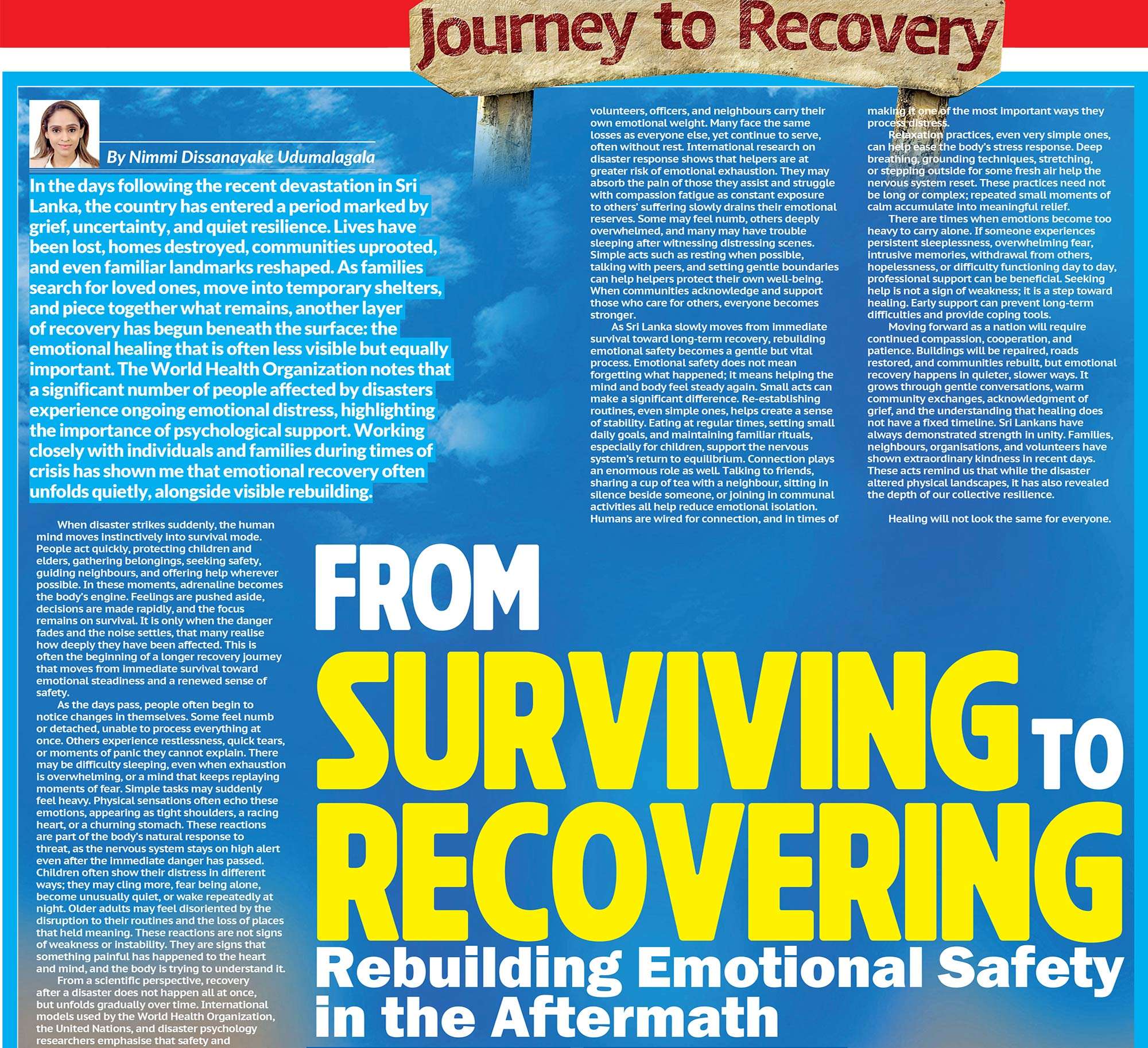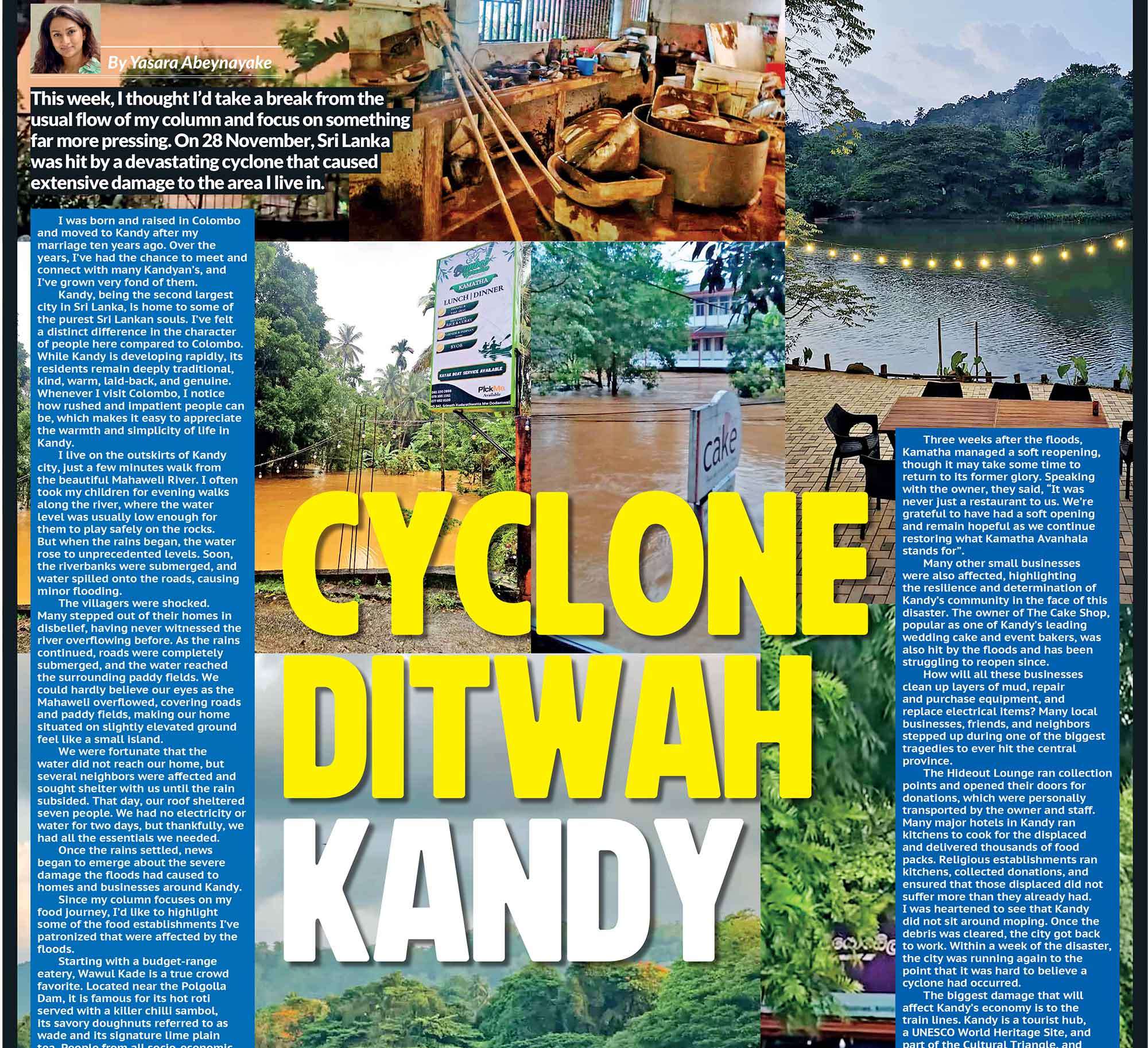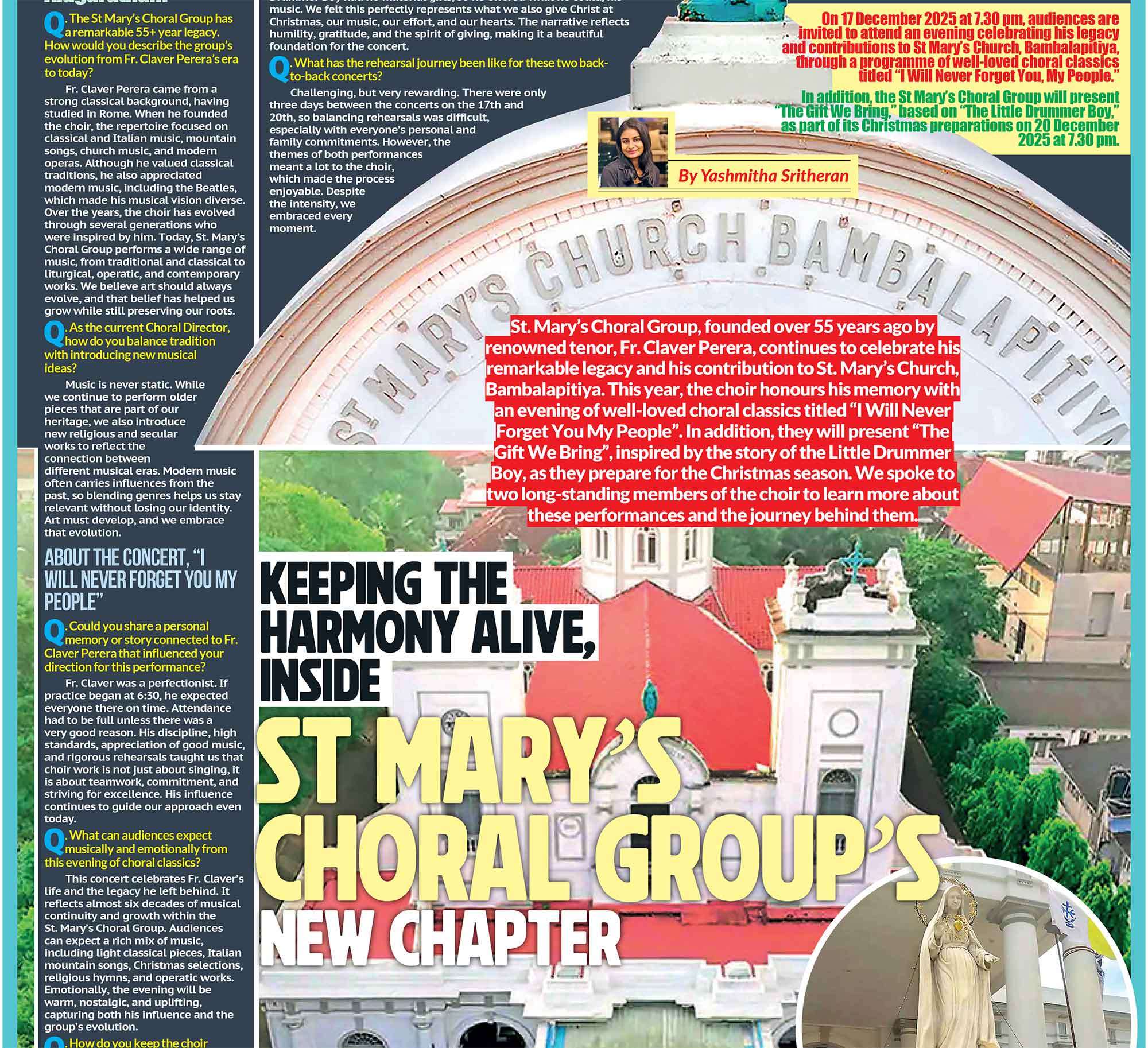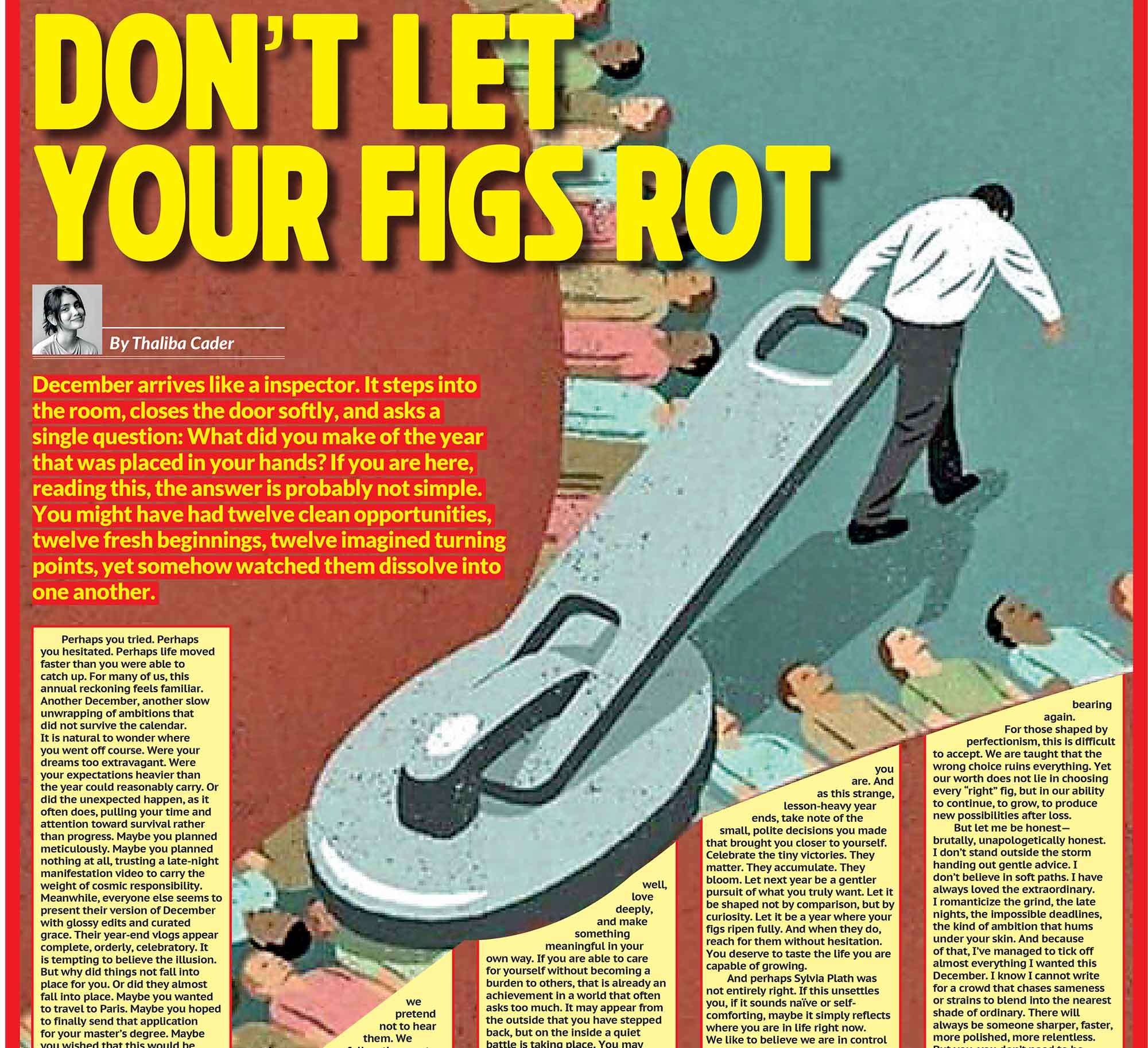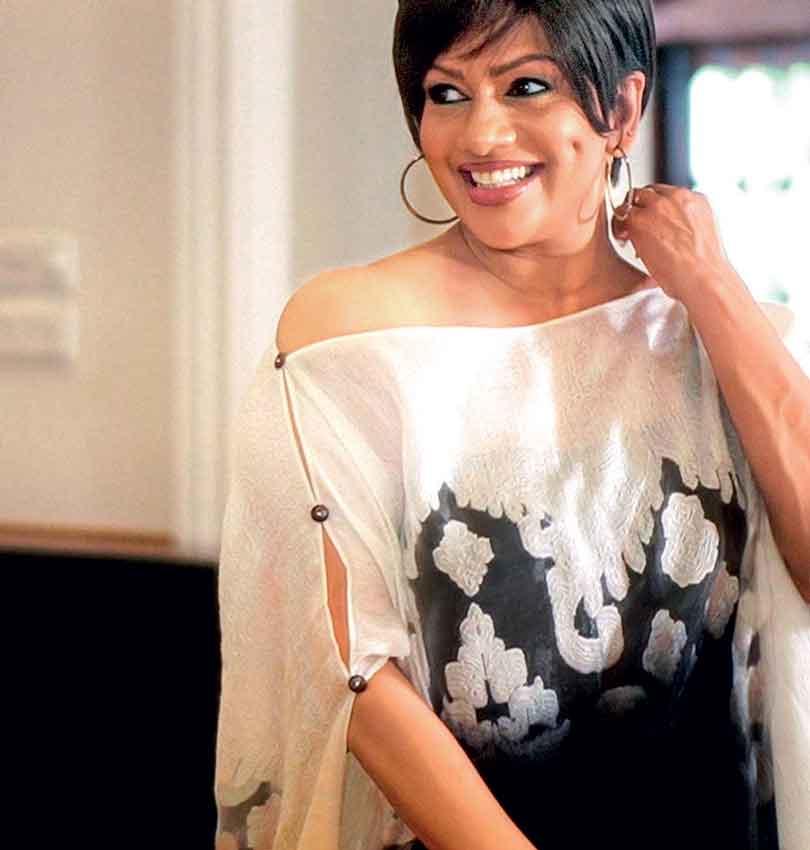
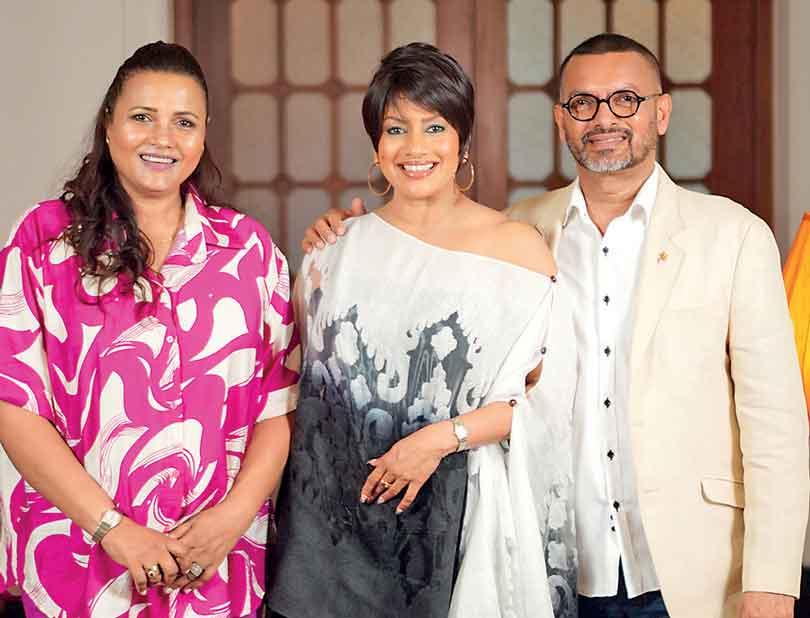
Sri Lankan cinema icon and pageant mentor Sangeetha Weeraratne has spent decades in the spotlight, not just as an actress, but also as a guiding force behind grooming young women to represent Sri Lanka on the international stage. In this candid conversation, she opens up about her early dreams, her journey with Model Shop, the challenges behind Miss World Sri Lanka, and the criticism that often follows.
Q If you hadn’t stepped into the movie industry at 16, where do you think life would have taken you?
I was always interested in business, so maybe I would have followed in my father’s footsteps. But my true first love has always been dancing. I dreamt of opening my own dance school and becoming a dance teacher. Even now, I believe that if I hadn’t entered films, I would have been a dancer and probably involved in business too.
Q You’re now synonymous with Miss World Sri Lanka as a director at Model Shop. How did that evolve?
It began with Shereen Kumaranathunga and me. At the start, we honestly did not know the nuances of international pageants. We had a strong local team with Senaka de Silva as choreographer, along with support from Channa Wijewardene, Athula, Ramani Fernando, Kumar de Silva and later Lashni Munasinghe, but our understanding was rooted in how things worked in Sri Lanka. Our first international foray was with Sabrina Herft at Miss Universe. Later, we took over Miss World, which was a very different ecosystem. Early on, contestants such as Asanki De Silva and Chulakshi Ranathunga returned saying that Sri Lanka was not really recognized as a “pageant country.” The wake-up call came when Amritaa De Silva returned and explained in detail what the international stage demands. That feedback changed the way we prepared.
Q Doesn’t the Miss World organisation share guidelines?
Yes, they do. We always followed the basic protocols and trained all our Miss World Sri Lanka contestants, not just the eventual winner, for what the international stage demands. But the challenge is that the gap between our national pageant and Miss World is often very short, sometimes only four to five months. We did everything possible within that timeframe. Later, contestants such as Nadia Gyi, who competed in China, and Dewmini Thathsarani, who represented us in London during the cold December season, returned and shared their experiences. Each of them added valuable insights, helping us understand what more needed to be done and where we could improve.
Q You’ve been frank about finances. How much does funding really shape outcomes?
More than people realize. Countries that consistently place send candidates with deep preparation budgets, covering everything from wardrobes and accessories to travel, training, and presentation. We struggle to match even the basic logistics such as excess baggage. For example, Anudhi travelled with over 120 kilos of clothing and still had to get more sent later through DHL. Families often absorb these costs.
We appeal to designers and sponsors for clothing, airline support, and extra luggage, but many requests go unanswered. Our representatives step onto the international stage carrying not only the hopes of a country but also the stress of making ends meet. It is hard on them, and honestly, it is heartbreaking for us to watch.
Q You accompanied Anudhi Gunasekara to Miss World. What did you see up close?
That we were not doing enough. I used to think we were, but once you are on site, you see what “enough” looks like in the countries that win. It means layered training, immaculate logistics, and constant support. We have hardworking girls and a committed team, but we lack the structure that turns talent into a polished international contender. Socially, the experience can feel cold. At the hotel, with more than a hundred countries represented, some contestants were warm and gracious while others simply ignored you. You realize that you are noticed, but not yet seen as competition.
Q Anudhi received a fair share of criticism during her journey. Some people even went as far as to lash out at her online. How do you view that reaction?
Unfortunately, that is the reality of being in the public eye. Social media has given people the freedom to say anything, often without taking responsibility. Anudhi is young, talented, and still learning. She does not deserve that kind of negativity. Constructive criticism is fine because it helps you grow, but personal attacks only discourage young women from stepping forward. What is important is that Anudhi stayed strong, represented Sri Lanka with dignity, and showed resilience. That is something we should all be proud of.
Q Some insisted Anudhi had special backing.
That is inaccurate. Much of what stood out about her was self-driven. Her Beauty with a Purpose project on period poverty, Bleed with Dignity, predates the pageant. She even met the Prime Minister on her own initiative. We were not orchestrating photo opportunities. Her commitment was to the cause, not to publicity. That authenticity resonated. Additionally, international pageant pages rated Anudhi highly early on. Pages from the Philippines, Vietnam, India, Thailand, and other countries flagged her as one to watch by day three or four. We also saw countries that were favourites on those pages miss the top forty entirely.
Q Which Sri Lankan contestants created lasting impressions internationally?
Amrita and Sade. Sade competed during the COVID cycle. Organisers still remembered Amrita as “Sri Lanka 2016,” which says a lot given the yearly volume of candidates. Sade had to participate twice because of the pandemic and still made the final forty. Then there is Anudhi, who ignited national support at a level we have never experienced.
Q You’ve hinted that our “best” still isn’t enough. What would “enough” look like?
Double the budget we’ve historically allocated, at least. If the national pageant costs X, you need 2X just to prepare the winner for Miss World. That covers months of targeted training: communication, stage presence, current affairs, fitness, styling, charity impact storytelling, media, and crisis handling plus a wardrobe planned to the last detail, well above airline allowances. We’re catching up, but we’re not there. If it were cricket, sponsors would queue up. For pageantry, it’s an uphill climb.
Q You’ve said the ecosystem at home also needs to change, starting from how contestants are groomed.
Many entrants have never walked a ramp. Some come from modelling, but pageantry is not the same as modelling. We run multiple mini pageants to give them stage time, polish their walk, smile, and interview skills, and help them understand that it is about the person, not just the clothes. It is expensive to do this properly, but if you skip it, your candidate learns those lessons on the international stage, and by then it is too late.
Q You’ve seen both the pre-social-media era and the current climate. What’s changed for contestants?
Everything has changed. Back then, there were no smartphones, barely any digital cameras, and very little social media. A contestant could be brilliant, yet hardly anyone at home would see it because the broadcast might not show her moment. I remember a past campaign abroad when we travelled with a large group, flags and all. Designers had curated stunning wardrobes, and logistics were meticulous. The world outside saw her, but Sri Lanka barely did. Now, a contestant can video-call every night. We, as mentors, along with their families, stay in touch. The audience at home can follow every step. Support is instant, and criticism is just as immediate.
Q What comes next for Miss World Sri Lanka?
The next edition aligned to the 2026 Miss World cycle is slated to take place this year. Internally we’re recalibrating training earlier, budgeting smarter, and asking for the partnerships we need. Our promise is simple: whoever wears the crown next will arrive on the international stage better prepared than any Sri Lankan before her.
Q Our last question is a controversial one. We saw you playing a huge part in Malini Fonseka’s funeral, but we didn’t see you at her birthday celebration. Where were you? Why didn’t you attend her last birthday?
I get asked this a lot, and honestly, it makes me feel sad. The truth is, I was not invited; I wasn’t included in that celebration. That’s the reality, and I have to be honest about it.



